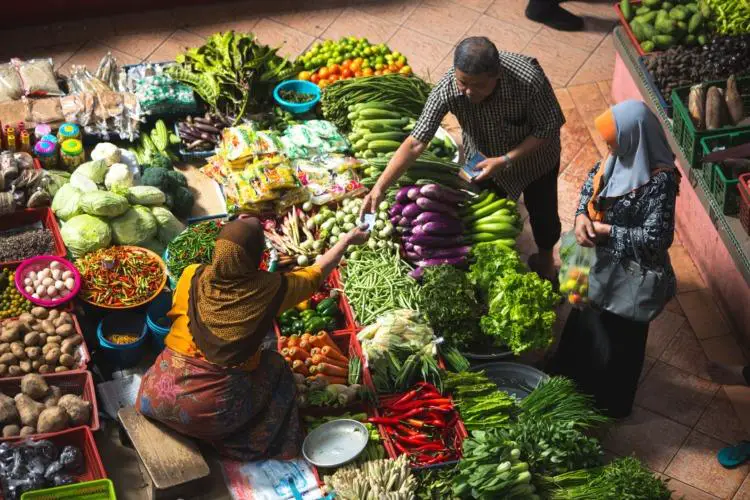- Small businesses struggle for credit as lenders channel 80 percent to Medium Sized Enterprises
- High collateral requirements and unfavourable interest rates have been found to disadvantage MSMEs
- Only 16 percent of businesses are reaping from Kenya’s formal MSMEs financing market valued at $45.4 billion (Sh5.9 trillion).
Only 1.1 million micro, small, and medium enterprises in Kenya have access to formal credit out of the total 7.4 million MSMEs in the country.
This equals only 16 percent of businesses reaping from Kenya’s formal MSMEs financing market valued at $45.4 billion (Sh5.9 trillion).
According to a new finding by pan African market insights firm Stears, despite MSMEs accounting for over 98 percent of businesses and contributing a substantial 40 percent to GDP formal financing is still small.
“Despite their outsized economic impact, only 16 per cent of these vital enterprises currently access formal credit. With most MSMEs dependent on informal and often unreliable financing channels, the demand for accessible, affordable credit is high,”
“This untapped potential could unlock a compelling investment opportunity to support the growth of Kenya’s MSME sector by bridging the financing gap,” said Stears in the report titled Assessing Africa’s MSME Financing Potential.
Read Also: Africa’s $824Bn debt, resource-backed opaque loans slowing growth — AfDB
The survey further shows that small and medium enterprises represent just 14 per cent of bank loan accounts.
Notably, banks are strongly inclined towards medium-sized enterprises, directing a substantial 86 per cent of loan accounts 2022 to this segment. Key sectors benefiting include trade, real estate, and transport.
The banks channeled 40 Per cent of their loans directed to MSMEs to trade, while 20 per cent was directed to real estate, 11 per cent to manufacturing, 8 per cent to transport and communication, construction, and Food & accommodation accounted for only five per cent while 10 per cent went to other sectors.
From the insights, a striking 90 per cent of Kenyan banks’ MSME loan portfolios comprise short-tenured term loans and bank overdrafts, a mismatch for long-term investments.
While mobile money loans typically adhere to a 30-day repayment cycle, innovative strides by banks like KCB and Standard Chartered Bank in launching 2-12-month mobile loans signify progress.
“Yet, market demand remains for longer-tenured loans and embedded finance solutions tailored to niche MSME sectors, such as transport, construction, restaurant, and hotel chains, which traditional banking institutions historically underserve,” reads the report.
High collateral requirements and unfavourable interest rates—though lower than those in Ghana and Nigeria have been found to disadvantage MSMEs disproportionately.
[Photo/Tech-cabal]
Small Businesses Struggle for Credit
For instance, Kenya Commercial Bank recently increased its base lending rate to 15.5 per cent, up from 14.7 per cent in December 2023, effective May 27th for new facilities and July 1st for existing ones.
The survey says that rapid mobile money innovations, led by Safaricom, are seeing banks, like NCBA and Kenya Commercial Bank, leveraging technology to tailor niche micro-credit products for MSMEs.
“Banks’ MSME lending income doubled from 12 per cent of total lending income in 2020 to 24 per cent in 2022, increasing from Sh70.8 billion ($646 million) to Sh105.1 billion ($851 million).”
As the leading mobile money platform, Safaricom has emerged as a crucial distribution channel for lenders, notably through its flagship products, Fuliza and M-Shwari, commanding a 59 per cent market share.
It adds that these offerings result from Safaricom’s strategic partnerships with prominent banks such as NCBA and Kenya Commercial Bank. Combining mobile money channels with strategic bank partnerships is increasingly essential to delivering SME credit products at scale.
However, despite sizable funding rounds, companies like Twiga, MarketForce, and Copia Global have encountered significant cash flow and operational challenges, providing insights into the realities of navigating Kenya’s complex MSME market.
The report notes that while factors such as a weaker shilling and a tight macroeconomic climate undoubtedly exacerbated these challenges, crucial lessons emerged. Meticulous assessment of cash flow risks within specific verticals is paramount.
Investors and lenders must prioritise avoiding sectors characterised by thin margins and lengthy repayment windows, which can severely strain liquidity when scaling B2B embedded finance platforms.
